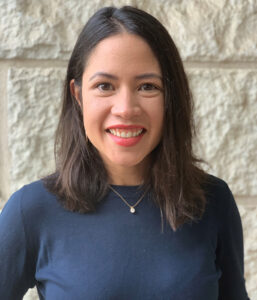
When was the last time you walked into the drug store or grocery store and visited the beauty section? The number of skincare options is overwhelming for even a professional, let alone a consumer. So what should I focus on if I have skincare problem areas or concerns? Here are some tips of just a few items you should incorporate into your daily skincare routine.
0-20
The most important thing that you can do before the age of 18 is sun protection. Blistering sunburns before the age of 18 predispose us to the development of skin cancer later in life. Wearing sunscreen and avoiding a tanning bed will prevent lentigines, AKA sun spots, wrinkles, and skin cancer later in life. Skin changes like poikiloderma of Civatte and actinic purpura, aka bruising on the forearms seen in later decades, all can be prevented by lessening damage in youth.
20-30
When one turns 20, it is good to start to use retinol, topical vitamin A. This super vitamin when used topically prevents and treats sun spots, evens skin tone and keeps the collagen (our natural wrinkle preventer or filler) from depleting. The only time you should refrain from retinol use is if you are pregnant or breast feeding. Continue to uses sunscreen regularly in this decade of life as well.
30-40
This is the decade of life where we start to talk about the treatment of skin changes rather than prevention. Early 30s, you may start to see fine lines, and this is when dysport/botox is optimal. Oral nicotinamide 500 mg twice daily is a B vitamin. This gives your skin more energy to repair itself and helps us make 25% less precancers and skin cancers. Now is a great time to add this vitamin to your regimen.
40-50
Welcome to your forties! In this decade pigmentation, aka dark spots, and fine and more pronounced wrinkles can be a concern as we lose collagen from our cheeks and around our eyes. Continue sunscreen SPF 30, and vitamin A/retinol in this decade. Ingredients like hydroquinone, kojic acid, vitamin c (l-ascorbic acid), glycolic acid, azelaic acid can all help with brightening skin and reducing dark spots that are the result of sun over time. Hyaluronic acid can help to decrease the appearance of fine lines and wrinkles. Injectable fillers can be a more invasive but more effective way to decrease the appearance of lines that form around the nose and lips.
50-60
The fifth decade of life is when skin can start to dry out. The sebaceous oil glands that moisturize our skin can turn from grapes into raisins and not produce as much moisturizing oils as they did previously. This is the time to use more moisturizer all over your body to prevent dry itchy patches on the arms and legs. Ceramides are a great ingredient to look for in your body and facial moisturizers. The best time to moisturize is after showers when the skin in full of water as moisturizers act as a barrier to evaporation and keep the skin from losing hydration. Drinking water is also a great way to hydrate from the inside out to help with skin turgor and help minimize dark circles around the eyes.
60-70
Be sure to keep an eye out for spots that are growing or pimples that don’t heal. Especially those that develop on Be sure to keep an eye out for spots that are growing or pimples that don’t heal. Especially those that develop on the face, ears, forearms, and hands. These could be early skin cancers. These do not have to be dark in color, and they do not have to hurt or bleed. One in three people will have a skin cancer in their lifetime. For the cosmetically minded who want to think about removing any sunspots on the face and arms, intense pulse light would be a laser treatment that has good results with multiple treatments.
70 and beyond
Are you getting purple bruise like marks on your forearms? This is actinic purpura, sun over time turns our superficial veins in areas like the forearm that get the most sun into swiss cheese. Any minor trauma to the forearms can cause bruising. Arnica gel or DerMend can be used to help these bruises resolve faster.
These are just a few of the items Cynthia Griffith will address at our 2022 Skin, Bones, Hearts & Private Parts CME Conference. Please come join us live and in-person. Click here to find out more about where she will be speaking.
Skin Bones CME Conferences
Hit the reset button while earning continuing medical education credits at our CME conferences, where you can travel to a vacation destination; earn CME credits with like-minded nurse practitioners, physician assistants, and physicians; and ‘unplug’ while enjoying a new locale! Check out our upcoming Skin, Bones, Hearts & Private Parts 2023 CME Conferences and 2024 CME Conferences! At every event, the best of the medical community gathers to earn CME credits, network, and gain knowledge on dermatology, orthopedics, cardiology and emergency medicine, women’s health, pain management and pharmacology, diabetes, ER, and mental health. On-line CME courses and Virtual CME are also available so you have the option of earning CME credits online.